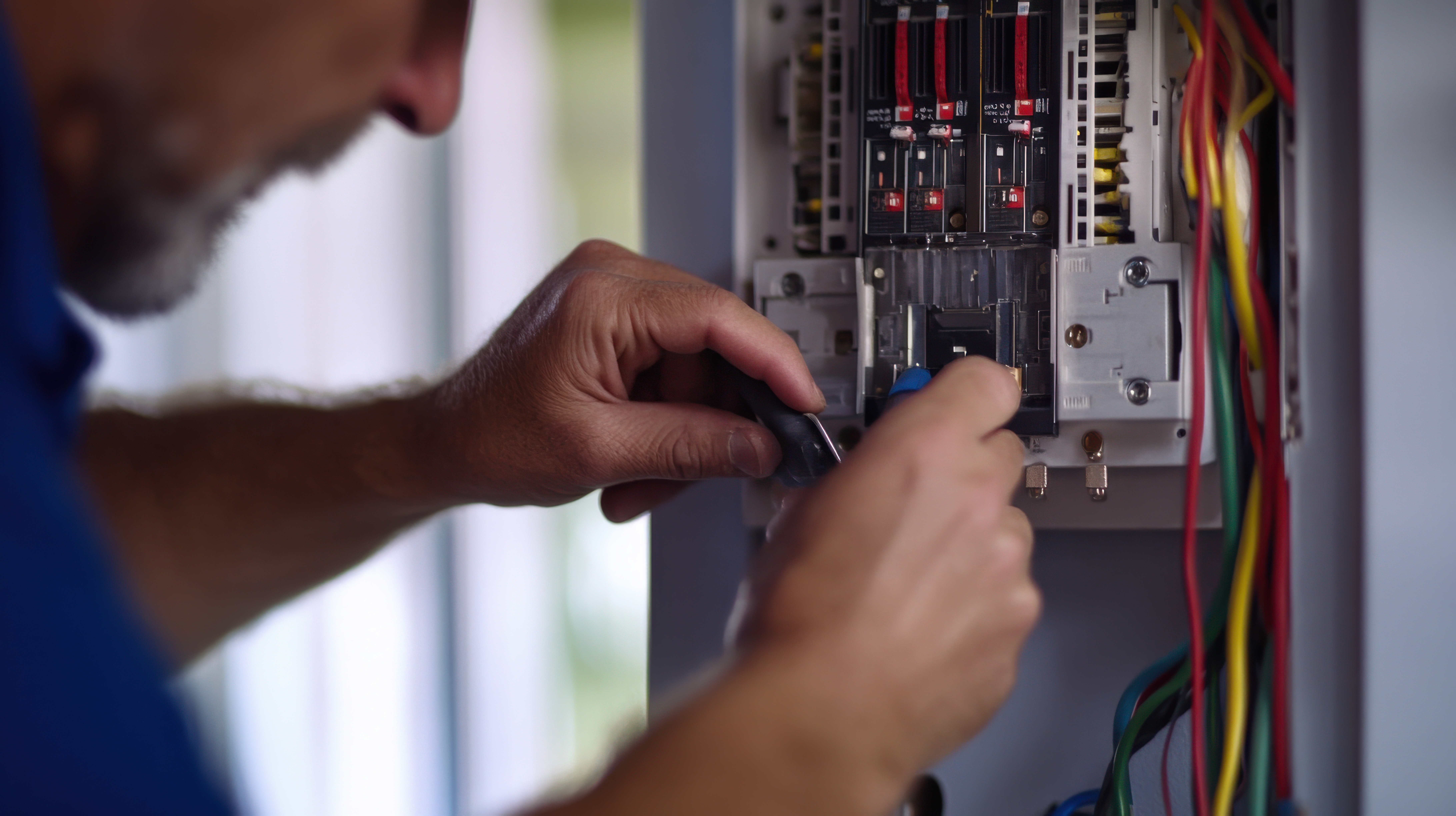
How much does it cost to add an electrical outlet in Atlanta? Learn about average prices, local permits, and what impacts the cost in the Atlanta area.
Watt’s the scoop on refrigerator wattage?


The average home fridge uses 300 to 900 watts at peak cycle.
Most of the time, a fridge requires only 100 to 300 watts.
Determine the wattage by multiplying volts by amps.
Knowing the wattage can help you anticipate electric costs.
It’s easy to take your refrigerator for granted until a power outage strikes. That big appliance humming in the background, keeping your food fresh, is a constant presence in the kitchen. The fridge often seems more like a piece of furniture than a machine constantly consuming power, which leads us to refrigerator wattage. Unlike the passed-down couch sitting in the living room, your fridge is costing you money every single day.
When you think a little about your daily energy usage—whether it’s because you need to rely on a backup generator, you’re switching over to solar panels, or you’re simply trying to cut down the monthly bills or your carbon footprint—you’ll want to get into the weeds of your fridge’s power consumption. The first step is determining how many watts an average refrigerator needs for its daily operation.
Though you’ve probably spent a whole lifetime making casual decisions about wattage when buying light bulbs, you may first find yourself wondering: What are watts, anyway?
Watts are a unit of measure that describe the rate at which power flows. When it comes to home electricity, watts indicate the amount of power a device consumes in its operation.
Watts are related to, but distinct from, these other units of electrical measure:
Volts: Volts are used to quantify the speed at which a current passes through a circuit.
Amperes (or amps): Amps measure the volume of current in an electrical circuit.

The wattage actually consumed by a refrigerator depends on a number of different factors: the age and cleanliness of the appliance, the temperature of the kitchen, the fridge’s size and placement, and more. Keep in mind that wattage ratings are an estimate, indicating the minimum number of watts required by an appliance to run.

Home refrigerators come in many different sizes, with capacities ranging from 11 to 28 cubic feet. Today, the average home refrigerator typically uses between 300 and 900 watts, but it’s a little more complicated than that.
These ratings are an estimate of the electricity consumed by the fridge at its full capacity when the compressor is running, which only happens during a portion of the day (roughly 30%). The actual running wattage of a typical fridge (which is usually between 22 and 31 cubic feet) falls closer to something between 100 and 300 watts.
Mini fridges are designed to keep a smaller number of food items and drinks fresh using less electricity than a standard fridge. Due to advancements in technology, most contemporary mini fridges use between 50 and 65 watts, though some older models use as much as 100 watts.

When it comes to determining how many watts are required to operate your own refrigerator, there are some steps you can take to remove some of the guesswork. When in doubt, you can also always consult a local appliance installer.
If you’ve held on to the owner’s manual for your appliance, or if you can find one online, you can simply look up the wattage rating. Grab your fridge’s brand and model number (you can typically find this on a label somewhere inside the fridge), and get to Google-ing!
Even if you no longer have access to the manual, most of the information you need will be included on the manufacturer’s label posted on the inside of the refrigerator. In most cases, the label won’t indicate the wattage, but it will include the maximum amps and the rated voltage. To calculate the wattage, simply multiply these numbers. To approximate the running wattage, divide it by three.
For example, you may find a voltage rate of 115 V and a maximum amp capacity (ampacity) of 6.5. Multiply them, and you have 747.5 watts. This will be the wattage required under normal conditions for the fridge to operate at the peak of its cycle.
Remember, your refrigerator’s compressor only runs around 30% of the day. So, you can divide that last number by three for a total of 249.2 watts. This is the rate at which your refrigerator consumes energy during most of the day.
All of the above methods of finding out how many watts your refrigerator requires are estimates made with the assumption that the appliance is functioning well in average conditions. But if you really want to measure the number of watts your fridge is using every day, you can buy an electric usage monitor. This device can be inserted into the same outlet as the fridge to take and display live readings of the power consumption. Typically, these monitors will come within 1% to 6% accuracy.
Once you’ve determined the number of watts your refrigerator requires to run, you can use the number to get a rough calculation of what it means for your energy bill.
First, multiply the wattage by 24 so that you have the total requirement for one day.
Next, divide the result by 1,000 for the total number of kilowatts (kW).
Consult your electric bill to find out how much your local utility company charges per kilowatt-hour (kWh).
Multiply that cost by the total number of kilowatts.
The result is your daily cost. You can multiply it by 30 to determine the monthly costs of running your fridge or by 365 to determine the annual total.
So, continuing our example above, if your fridge needs 250 watts for normal use, the total daily usage is 6,000 watts. Dividing by 1,000 gives us 6 kW. Say your electricity rate is 23 cents per kilowatt-hour; the daily total cost to run your fridge would be $1.38 per day or roughly $41.40 per month.

If you’re concerned about all the wattage being gobbled up, there are a number of different things you can try to reduce the electricity burden of your refrigerator.
No matter how much you hope, the fridge won’t magically create a new, tasty snack for you the third time that you open the door in 30 minutes. The easiest way to minimize your refrigerator’s energy consumption and reduce your electric bill is to decrease the amount of time you leave the door open. The more cool air that escapes into your kitchen, the harder the fridge is going to need to work to get back to the right temperature.
Many homeowners don’t know that they need to clean a refrigerator’s condenser coils regularly. When dust and grime accumulate, the condenser no longer works efficiently, draining more power to function. Keep a regular cleaning schedule to cut your usage costs.
When a refrigerator is kept in direct sunlight or placed close to a heat source, like an oven, it needs to work even harder to keep its contents fresh and cool. Make sure your fridge is located in a darker, cooler corner of the kitchen to maximize efficiency.
If the seal of your fridge has started to loosen, cool air will constantly be leaking, placing greater demand on the power supply.
You can check your fridge’s seal with the dollar bill test. Place a crisp dollar bill between the door and seal and then close it. Try gently pulling it out. If it doesn’t stay in place, the seal should be replaced.
From average costs to expert advice, get all the answers you need to get your job done.

How much does it cost to add an electrical outlet in Atlanta? Learn about average prices, local permits, and what impacts the cost in the Atlanta area.

How much does an electrical box replacement cost in Atlanta? Learn what affects the price and how much you can expect to pay.

Wondering what rewiring a house costs in Atlanta? Find out what drives the price and how to plan for this important electrical upgrade in your area.

Wire nuts are used to connect two or more electrical wires. Our guide explains what the different wire nut sizes and colors mean, and when to use each.

Figuring out how many outlets on a 20-amp circuit comes down to the electrical load on the circuit. Learn how to plan for a 20-amp circuit.

When it comes to precise measurements, you need a precise tool. A micrometer can definitely come in handy, so learn how to read a micrometer here.